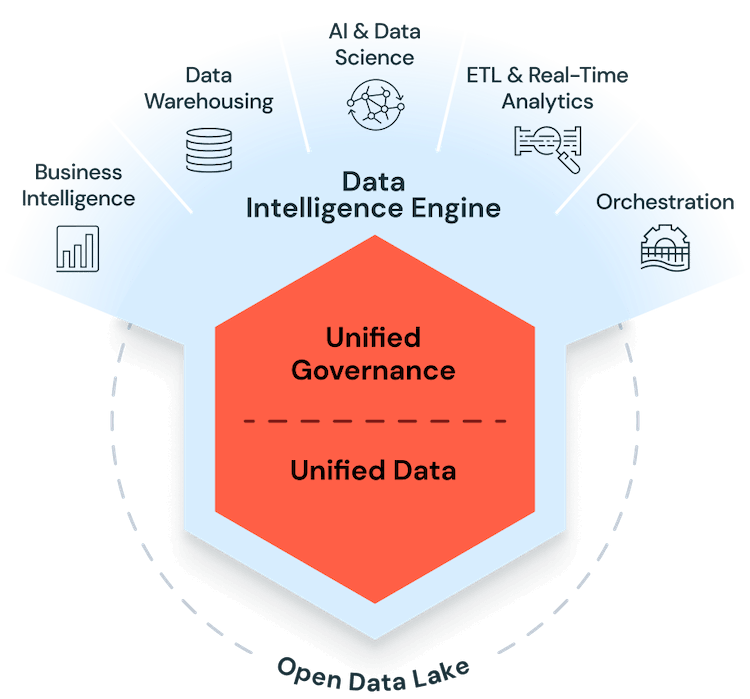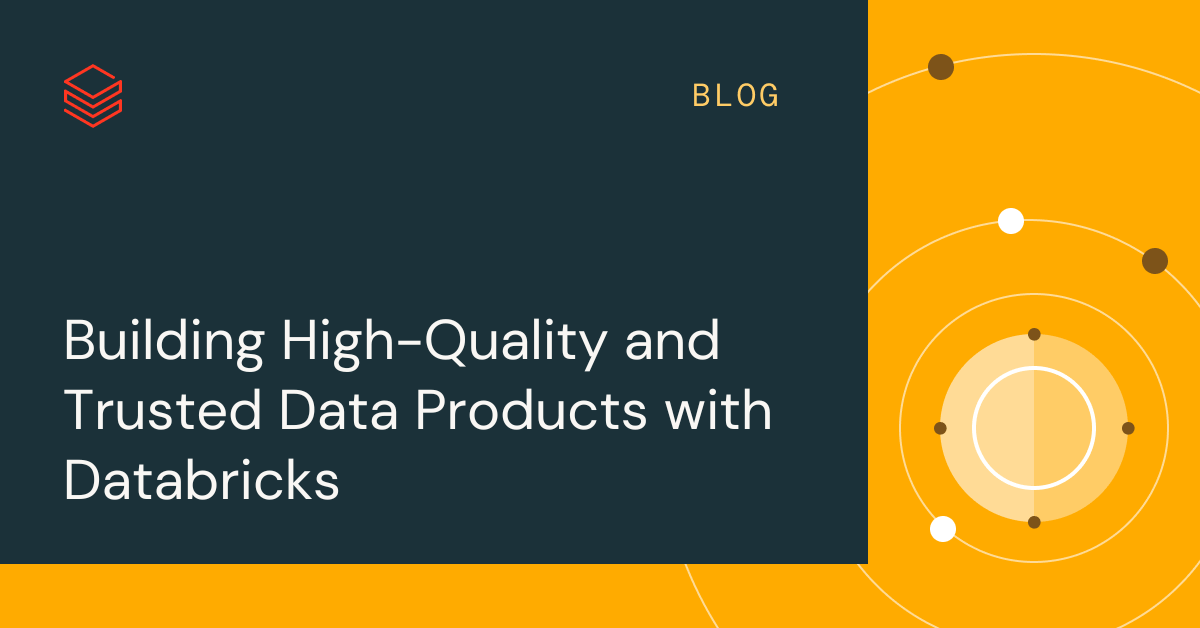The Data + AI Trifecta: Process, People, and Platform

There's rapid demand building among enterprises to build and leverage Generative AI applications. In fact, according to a recent McKinsey study, one-third of organizations are using it in at least one business function. There's so much potential for Gen AI to change how businesses interact with their data. But many don’t know where to even begin – or how to move models from experimentation to production.
As companies look to launch initial use cases, many will find themselves limited by existing IT environments. Data resides in many places, creating information silos. There are too many tools involved with turning raw data into business value. And governance and compliance remain a formidable challenge.
Meanwhile, amid this rush, many are forgetting to put in place the policies and procedures to ensure AI is successful. It’s more than just adopting a few new IT tools, testing an AI application, or moving to the cloud. Business leaders are all asking the same questions: How do we accelerate our company’s plan for data and AI? How can we take advantage of Gen AI without putting our business at risk? And how do we start to get value from these systems as quickly as possible?
So what’s the formula for a successful data and AI strategy? Like so many things, it all comes down to the right process, people and platform. Read below for a brief summary of each of these steps. To get detailed insights, download our new executive guide: Accelerate Your Data and AI Transformation.
Process: Start with the end goal in mind
Data is vital to AI. As a result, organizing and governing it is one of the most critical steps an organization will take in its adoption journey.
The workloads span running basic analytic queries to building Gen AI applications. Regardless of the use case, proper governance is a must. If they can’t set access controls for individual users, companies can’t democratize access to data. They need to be able to put stricter safeguards on their most sensitive technology. And they need to ensure compliance with all the different regulatory requirements.
Of course, to govern the data, companies need to first find and unify all their enterprise data. Then they can confirm the underlying information is high-quality, timely and governed. And only then can the business start to broaden access.
The next step is figuring out the initial use cases. There are so many places where Gen AI can make a positive impact. But they all vary in both the value provided and the feasibility of the project. While some initiatives may produce an immense return for the business, they could be complicated to set up. These types of projects shouldn’t be attempted for the inaugural foray. Instead, organizations should start small. Models designed to help automate tasks or assist employees are typically good pilots.
But companies shouldn’t let every department go out and start independently building one of these systems. Instead, they need to develop a repeatable and scalable process to identify new AI opportunities, and pinpoint early success stories to help drive confidence for more complicated projects.
As they wade deeper into AI, companies can begin to develop a longer-term strategy around their adoption and use of the technology. We call this the “data and AI North Star,” and it should serve as a guide for all future investments. By establishing what the business wants to achieve from AI, they can start to benchmark results against those goals to track progress.
People: Empowering users and driving transformation
Ultimately, the success of your data and AI strategy hinges on how much employees embrace and leverage the insights and efficiencies delivered, and shift their own behaviors to complete the work.
That means you need to empower, reskill, and champion data and AI usage from front-line staff to the C-suite. The goal is to democratize data access so that employees can easily get their hands on accurate, timely and relevant information to drive results.
But making data the foundation of your business - and building a culture enabled by that foundational data - may change how the organization is structured. And activating the advantages and innovation that machine learning and AI can unlock will certainly create new work processes for every department.
With the swift advancements happening in areas like generative AI, companies need to start asking themselves key questions, including:
- How will we meet employees where they are, based on role and expertise, to make sure they can access the data and leverage intelligent insights? This will rarely be a one-size-fits-all solution and must accommodate the unique needs and structure of each organization.
- How do we create a cycle of transformation, enablement, and feedback to outpace the competition? Understanding why something is not working is just as important as figuring out what’s driving success. And making sure that there’s a feedback loop that’s driving constant improvement is vital to remaining an industry leader.
- What’s the right structure for balancing control with autonomy in this new data-driven paradigm? The organizational structure may need to evolve to drive consistency and capabilities.You’ll want to ensure clear accountability by the lines of business and be prepared to overcome internal resistance to that new responsibility.
- How do we need to reskill and drive cultural transformation to create a continuous learning culture for new data and AI technologies? This will likely include many new educational pathways, a high degree of change management, and real cultural reinforcement to ensure employees feel safe to learn new skills and work behaviors. If your employees don’t clearly see a personal benefit to adopting these skills and being open to change, resistance will be high and could derail your plans.
Platform: Future-proof your data + AI technologies
Technology is moving too quickly to ignore. And no one really knows what’s coming.
Think about it: Just a few months ago, few corporate leaders were really plotting how they could use LLMs or Gen AI. Now, executive teams are rushing to try to figure out how to build in-house chatbots based on their proprietary data. And for many, the biggest impediment will be their own IT environments.
It’s why companies need to adopt open interfaces and data formats:
- Over the next decade, there will absolutely be disruptions that businesses have to be ready to quickly navigate if they want to stay competitive.
- Compared to proprietary solutions, an open approach gives you the greatest ability to both meet your goals today and have sufficient technical flexibility for tomorrow.
- Open source is the foundation that will be able to support enterprises well into tech’s next-generation. With a massive community of contributors, open source products don't suffer the same innovation droughts or legacy skillbase as proprietary tools.
In general, companies should strive to pick a foundation that will give them the flexibility to adapt to future needs. Re-platforming is complicated and expensive. An open foundation means enterprises will always be able to take advantage of the latest and greatest technology.
The Databricks Data Intelligence Platform
Wouldn’t it be great to tackle all of these challenges through one unified data platform? The Databricks Data Intelligence Platform gives enterprises everything they need to create a data and AI strategy that’s successful, scalable and future-proof.
Built around the lakehouse architecture, the Databricks Data Intelligence Platform lets businesses build a central repository for all their structured and unstructured data. That eliminates the silos keeping data fragmented across the enterprise.

And with Unity Catalog as a foundation, companies don’t have to worry about data governance. They gain the ability to set access controls by the user, as well as track how data is flowing through the organization to help match the right data to the right models.
Quickly, concerns about compliance begin to subside. The organization is able to democratize access to this information without worrying about whether employees have access to the wrong data.
And with AI built-in, the Databricks Data Intelligence Platform enables everyone to interact with enterprise data in a more dynamic way. No longer are the benefits of advanced analytics regulated to data scientists. With a natural language prompt, employees can scour the breadth of corporate information. Most importantly, because it’s powered by a company’s own data, the platform understands the unique semantics of the organization. It will be able to process internal jargon and tailor insights to the company’s own distinct operations.
We’re excited to continue to share more insights in the future to help organizations across industries drive their AI strategy and get more from their data. For a detailed overview, download our new executive guide: Accelerate Your Data and AI Transformation.
Never miss a Databricks post
What's next?

Best Practices
July 30, 2024/4 min read

